Visiting Abu Dhabi for the first time, I was swept away by a feeling of camaraderie that went beyond borders. The Emirate of Peace is a modern-day salad bowl. Beyond the glossy skyscrapers, pristine roads and serene blue sea, it has an intertwined network of culture.
I experienced it through fortuitous acts of kindness — at the Corniche beach, Pakistani driver Faisal went out to his way to ensure that I taste Kashmiri nun chai, and Yaser Saeed Neyadi, Head of Public Engagement Unit at the Department of Culture and Tourism in Abu Dhabi, attempts to make me feel at home by waxing eloquent on Malayalam cinema, and Jallikattu. Cinema is a universal language, but hearing about such a niche part of the medium from such an unexpected source is not surprising when one becomes familiar with cultural convergence that is Abu Dhabi.
While the rich heritage inherited from the nomadic Bani Yas forms the core lifestyle of the Emirate, it has opened its arms to the diversity brought in by immigrants from around the world, forming the perfect cultural confluence.
Eggplant Fatteh from Zali
| Photo Credit:
Vighnesh P. Venkitesh
On one side of the Emirate is the Louvre, running in partnership with the French Louvre, which houses a breath-taking collection of exhibits. From works tracing the origin of human societies to masterpieces of contemporary art, the Louvre gives a sophisticated modern look to the Emirate. I stood just a few inches away from canvases painted upon by the likes of Vincent Van Gogh and sculptures carved by the likes of Auguste Rodin.
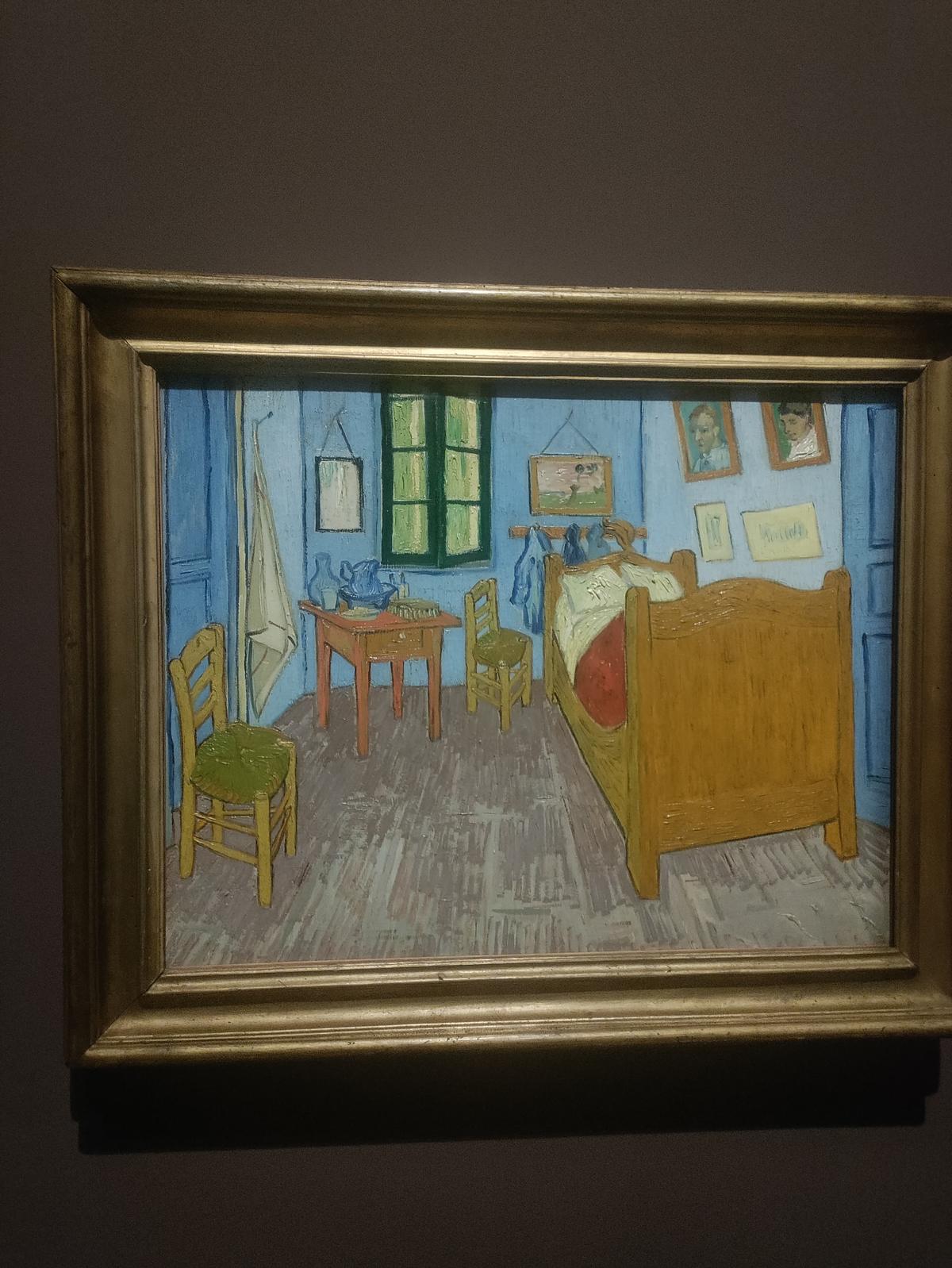
Bedroom in Arles by Vincent van Gogh displayed at the Louvre
| Photo Credit:
Vighnesh P. Venkitesh
The handicraft festival coincided with my visit to the city of Al Ain, which is a three-hour drive from Corniche. I saw a celebration of the ways of the Emirati life with displays of Ayaala, which is a form of communal dance to celebrate victory in wars with songs of love, tasted traditional coffees, and experienced falconry too. These two sides of the Emirate highlight what it represents: embracing modernity, while keeping tradition alive.
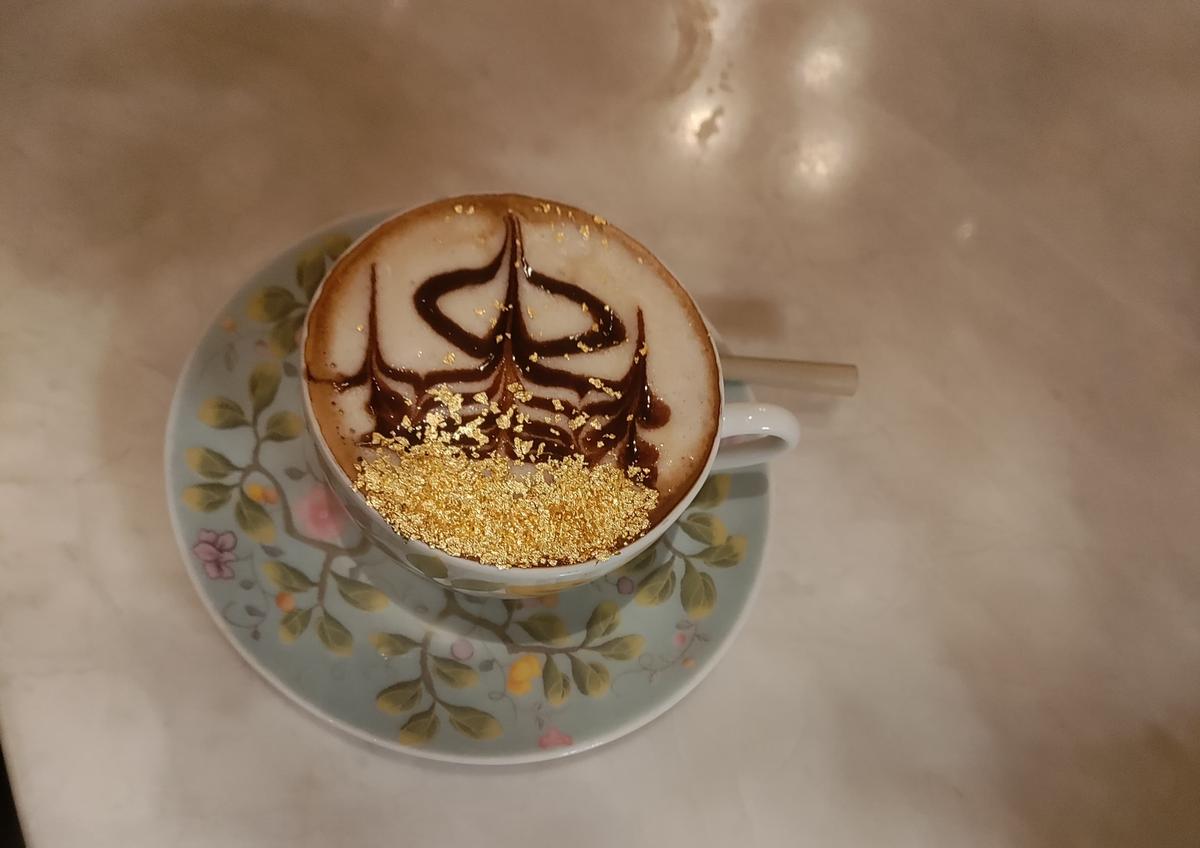
Gold coffee from Emirati palace
| Photo Credit:
Vighnesh P. Venkitesh
I also visited the famous Sheikh Zayed Grand Mosque, a grand spectacle of spirituality. From canoeing through the Jubail Mangrove Park at sunset to tasting the grandeur of the Emirate with a gold coffee at the Emirati Palace, each experience acquainted me with a different aspect of Abu Dhabi.
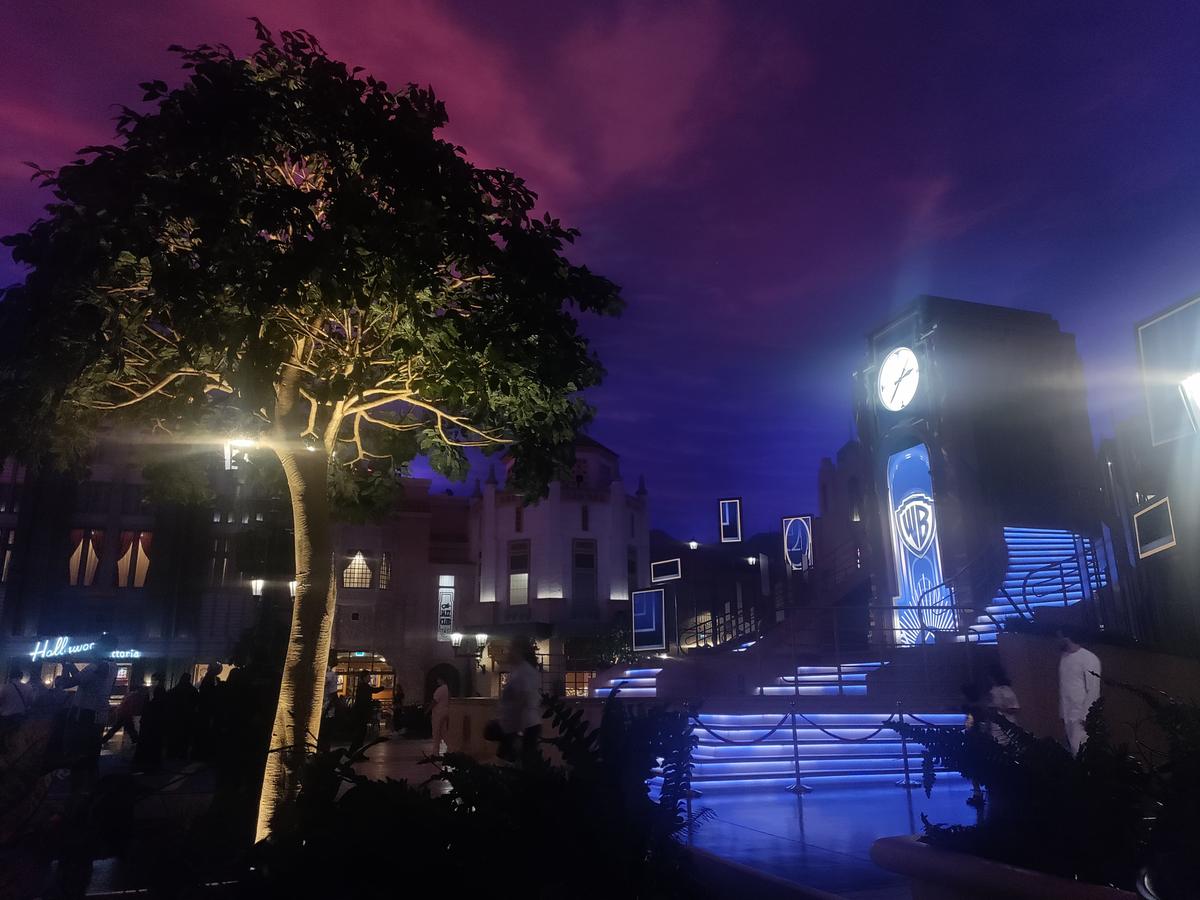
A view from inside the Warner Bros. World in Yas island
| Photo Credit:
Vighnesh P. Venkitesh
Cultures seem to converge on the dining table too. I try exquisite cuisine from across the world. There are Lebanese delicacies, such as kaftabatata (beef and potatoes) and eggplant fatteh (a type of salad) at Zali, a restaurant which describes itself as an ode to Beirut, its colours, culture and flavours. I also order authentic French beef bourguignon and poached pears at the Fouquet’s, a French fine-dining restaurant at the heart of the Louvre, which keeps in line with the Fouquet’s which opened on the Champs-Elysees in France in 1899. Then there is traditional Emirati cuisine, like margooga (a type of chicken stew) and luqaimat (a dessert similar to gulab jamun) at Erth, an authentic Emirati restaurant which explores the bounty of ingredients and storied culinary diversity of the Emirate.
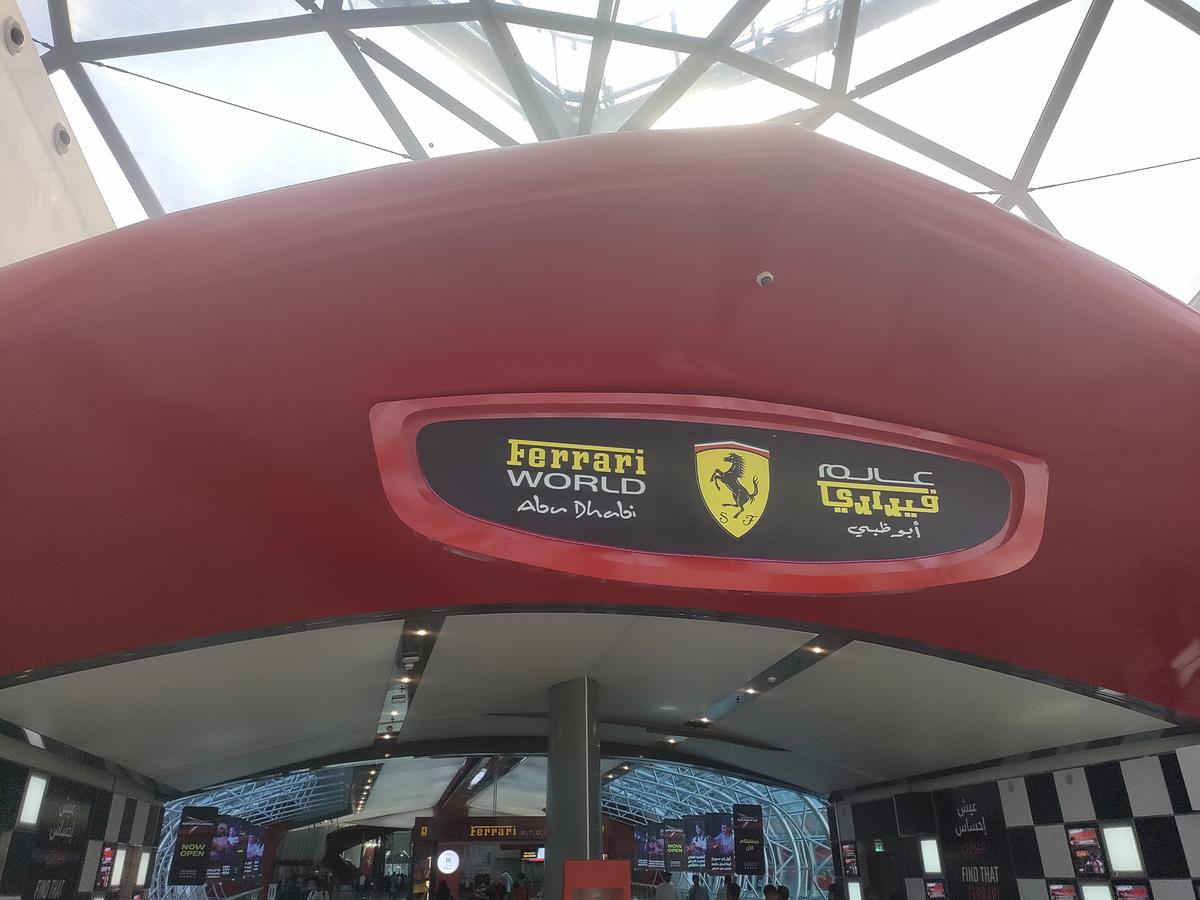
Entrance to the Ferrari World in Yas Island
| Photo Credit:
Vighnesh P. Venkitesh
Yas island, a symbol of human perseverance is a jewel in Abu Dhabi’s crown. Its theme parks, which attract visitors in hordes all year round, makes up a fraction of what it represents. The man-made island’s main attraction is its calm despite the crowd. I also had the chance to visit the Ferrari World and Warner Bros. World at Yas Island, and the fact that I could not find any ride with a wait time less than an hour, on a week day, demonstrates the crowd the parks attract. While Ferrari World offers an adrenaline rush for adventure enthusiasts with its roller coasters and vertical drops, Warner Bros. Museum has rides and activities with themes inspired by its movies and shows.
Ferrari World, which is designed to hold 10,000 visitors at a time, welcomes an average one-million visitors in a year with its unique adventure rides, Italian-themed eateries and shopping opportunities for Ferrari enthusiasts. Warner Bros. Museum, which is similar in grandeur and expects nearly 1.4 million visitors per year, gives an entirely different experience, with its uniquely crafted experiences that fans of DC comics and people who grew up watching Loony Tunes and Tom And Jerry, could get nostalgic with.
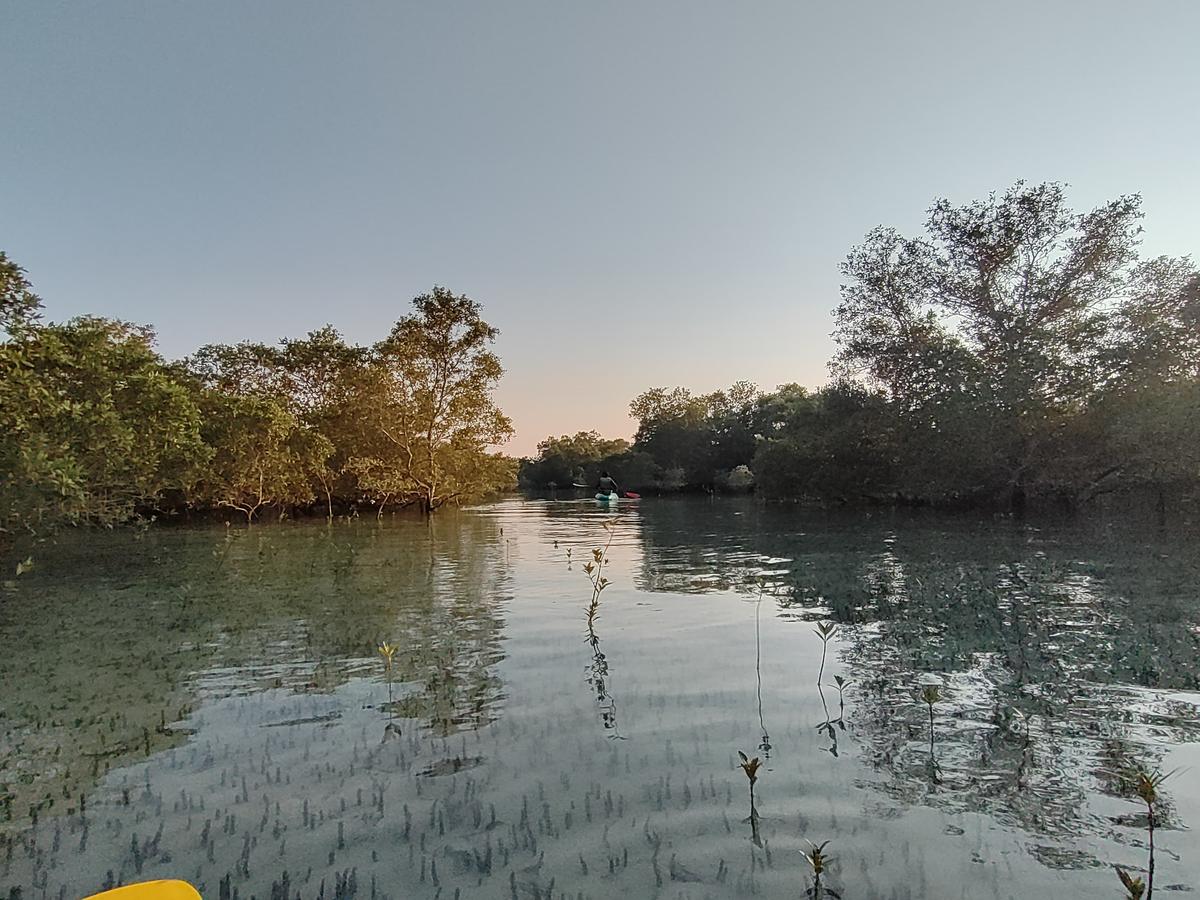
Mangrove trail at Jubail Mangrove Park
| Photo Credit:
Vighnesh P. Venkitesh
“Abu Dhabi is proving to be an increasingly popular destination for Indian travellers, both for leisure purposes as well as a thriving place to do business. Currently, India is the largest market for Etihad in terms of inbound passengers to the UAE. Abu Dhabi’s year-round sunshine, rich culture and heritage, and fantastic range of tourism activities make it a must-visit destination”, says Arik De, chief revenue and commercial officer at Etihad Airways, the national airlines of United Arab Emirates.
“In 2024, we expanded our network in India by adding three new destinations, meaning we now connect 11 Indian cities to destinations worldwide via our home in Abu Dhabi,” Arik adds. Etihad airlines now operates 181 flights per week to India, and Arik expects to carry nearly 3.5 million passengers from India to Abu Dhabi and beyond this year.
“The Abu Dhabi Stopover product is also fuelling this growth, as we’ve seen a 476% growth in guests choosing to add a complimentary one or two night stay at a premier hotel in Abu Dhabi as they journey with Etihad. This unique stopover programme encourages repeat visits, as guests get a taste for the amazing experience that Abu Dhabi has to offer,” Arik says.
(The writer was in Abu Dhabi under an invitation from its Department of Culture and Tourism.)
Published – April 19, 2025 02:20 pm IST




























